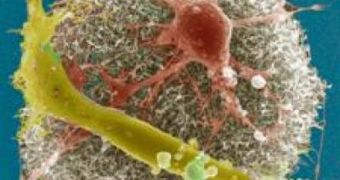A group of experts from the Tel Aviv University (TAU), led by Professor Yael Hanein from the university's School of Electrical Engineering, announced major progress in developing bionic eyes. The group has been investigating ways of merging man and machine for many years, and they say that the foundational research needed to make this a reality has been completed. The end goal of the work is to produce electrodes that can be merged with retinal nerves, and therefore restore at least partial sight to the blind, e! Science News reports. This could mean that the long-heralded future of bionics may finally be upon us.
The investigators say that the role of the electrodes will not be to act as relays between the eye and the visual nerves, but rather to stimulate the growth of natural retinal cells. The work has thus far proven extremely promising in tests conducted on animals, and the TAU team is hopeful that its approach will one day set the foundation for producing retinal implants that could be readily grafted in people. “We're working to interface man-made technology with neurons. It can be helpful in in vitro and in in vivo applications, and provides an understanding of how neurons work so we can build better devices and drugs,” the team leader explains.
Even if the technology itself is still many years away from practical, wide-scale applications, the new device can still be used, for example, by drug manufacturers, in testing new products. Treating delicate nerve tissues is notoriously difficult, and this instrument could be of significant assistance in this area, the group believes. Details of their approach to creating a fully-functional bionic eye appear in the latest issue of the respected scientific journal Nanotechnology. The basis for the device was laid using carbon nanotubes as a scaffold, on which electrical currents force nerve cells to grow.
“We are attempting to answer very basic questions in science. Neurons migrate and assemble themselves, and using approaches we've developed, we are now able to 'listen' to the way the neurons fire and communicate with one another using electrical impulses. Listening to neurons 'talking' allows us to answer the most basic questions of how groups of nerves work together. If we can investigate functional neuronal networks in the lab, we can study what can't be seen or heard in the complete brain, where there are too many signals in one place,” says professor Hanein.
“Neurons like to form good links with our special nanotechnology, and we're now investigating applications for retinal implants. Our retinal implant attempts to replace activity in places of the damaged cells, and in the case of retinal diseases, the damaged photoreceptors,” the expert concludes.

 14 DAY TRIAL //
14 DAY TRIAL //